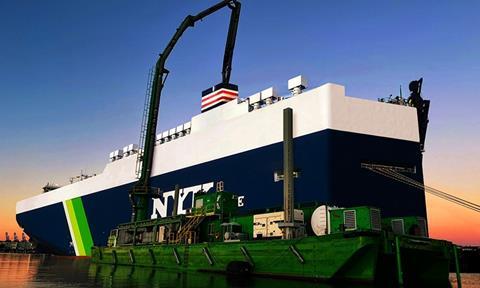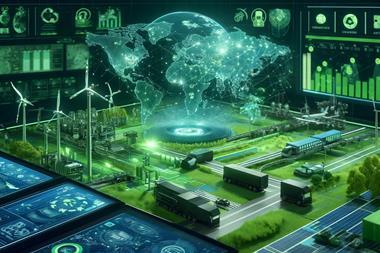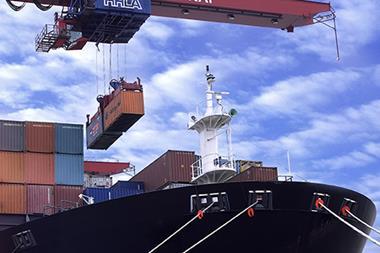From January 2025 NYK Line will use technology from Stax Engineering to capture exhaust emissions from the vessels its operates while they are at berth in Californian ports. The maritime logistics provider said the agreement with Stax, which is worth $16m, comes in response to the expanded exhaust emission regulations for vessels calling at ports in the state imposed by the California Air Resources Board (Carb).
Stax Engineering uses steel pipes and hoses to connect a barge, a small flat-bottomed ship, or a land-based exhaust-gas treatment system to a vessel’s funnel, allowing exhaust gases to be captured without venting into the air. The system is designed to capture and filter exhaust fumes from container ships, tankers and finished vehicle carriers, removing 99% of diesel particulate matter and 95% of nitrogen oxide (NOx).

It currently has capture and control technology at the Californian ports of Los Angeles, Long Beach and Oakland. Stax is based at Long Beach.
Bonnets on barges
Other capture systems are being used on the US west coast. The port of Hueneme has introduced a Bonnet Barge System to ensure zero emissions from ro-ro vessels docked at its North Terminal. That move is part of the ports Port Action, Climate and Environmental Development Project.
Further down the Californian coast, the port of San Diego is also working with bonnets to capture emissions for cargo vessels that are not equipped to plug in to shore-based electricity and switch off their diesel engines while at berth.
The Marine Exhaust Treatment System (Mets) involves a bonnet being placed over the vessel’s stack to capture and treat exhaust emissions while the ship is at berth. The system supports San Diego port’s Maritime Clean Air Strategy, and is certified by the California Air Resources Board. It is expected to be in place by the beginning of 2025.
In 2014, Carb mandated that oceangoing container ships, passenger ships, and other vessels calling at California ports reduce their emissions of nitrogen oxides (NOx), reactive gases (ROG), carbon dioxide, particulate matter (PM), and diesel particulate matter (DPM) while at berth. Carb plans to add car carriers and tankers to the regulation in 2025, making it an urgent issue to be addressed.
From the beginning of its fiscal year 2024, NYK plans to conduct trials for the long-term use of biofuels to replace heavy bunker oil on existing vessels. The company said it will comprehensively verify the safety and stable procurement of biofuels when used over a long period.
“Through this trial, NYK will establish a safe navigation system using biofuels and promote biofuel development to achieve the Group’s goal of a 45% reduction in greenhouse gas (GHG) emissions by fiscal 2030 compared to fiscal 2021,” said NYK in a statement.
Read more about sustainability initiatives at the car ports in North America in the summer edition of Automotive Logistics, which is published in May this year.


























![Global[1]](https://d3n5uof8vony13.cloudfront.net/Pictures/web/a/d/s/global1_726550.svgz)













No comments yet